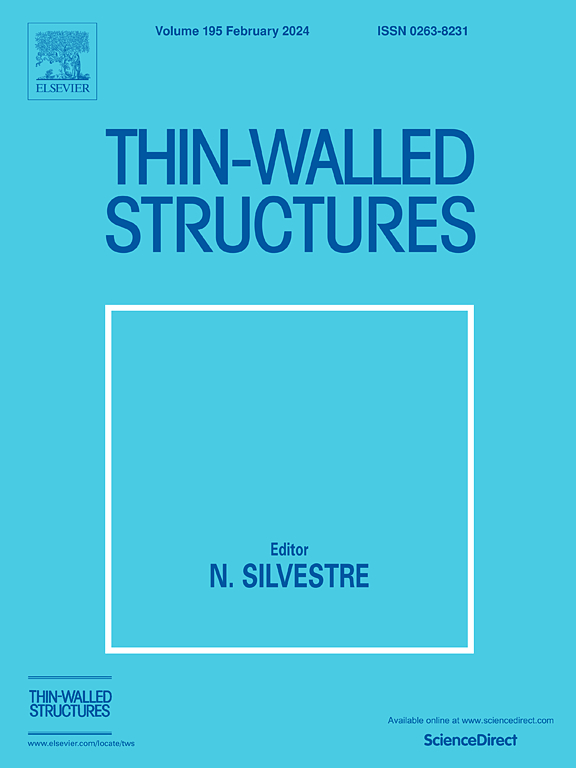HSMAOA: An enhanced arithmetic optimization algorithm with an adaptive hierarchical structure for its solution analysis and application in optimization problems
IF 6.6
1区 工程技术
Q1 ENGINEERING, CIVIL
引用次数: 0
Abstract
The Arithmetic Optimization Algorithm (AOA) has recently gained significant attention as a novel meta-heuristic algorithm. However, it faces challenges such as premature convergence and entrapment in local optima when addressing complex optimization problems. To overcome these limitations, this paper proposes an enhanced AOA, termed the Self-Adaptive Hierarchical Arithmetic Optimization Algorithm (HSMAOA). The proposed method integrates three key strategies: Firstly, a spiral-guided random walk mechanism is introduced to improve global search ability. Secondly, a novel adaptive hierarchy leader and follower mechanism is proposed, which establishes a complete multi-branch tree hierarchy with decreasing branching degrees within the population, thereby increasing information exchange among population individuals to escape local optima. Finally, a differential mutation strategy based on ranked selection is introduced to enhance candidate solution quality. HSMAOAʼs performance was evaluated on the CEC2022 test suite against some state-of-the-art algorithms. Results, including optimization accuracy analysis, convergence curves, and various statistical tests, demonstrate HSMAOAʼs superior optimization capability and robustness. In addition, tests on eight engineering structure optimization problems, including the pressure vessel design problem, the multiple disk clutch brake design problem, and the step-cone pulley problem, and so forth, further validate its effectiveness. Thus, HSMAOA shows strong competitiveness in complex optimization tasks and potential for a wide range of applications, and is an advantageous and promising alternative solution for optimization problems.
HSMAOA:一种具有自适应分层结构的增强型算术优化算法,用于优化问题的求解分析和应用
算术优化算法(AOA)作为一种新颖的元启发式算法,最近受到了广泛关注。然而,在解决复杂的优化问题时,它面临着过早收敛和陷入局部最优等挑战。为了克服这些局限性,本文提出了一种增强型 AOA,即自适应分层优化算法(HSMAOA)。所提出的方法集成了三个关键策略:首先,引入了螺旋引导的随机行走机制,以提高全局搜索能力。其次,提出了一种新颖的自适应分层领导者和追随者机制,在种群内部建立了一个分支度递减的完整多分支树状分层,从而增加种群个体间的信息交流,摆脱局部最优。最后,还引入了基于排序选择的差分突变策略,以提高候选解的质量。在 CEC2022 测试套件中,对 HSMAOA 的性能进行了评估,并与一些最先进的算法进行了比较。包括优化精度分析、收敛曲线和各种统计测试在内的结果表明,HSMAOA 具有卓越的优化能力和鲁棒性。此外,对压力容器设计问题、多盘离合器制动器设计问题和阶梯锥滑轮问题等八个工程结构优化问题的测试进一步验证了其有效性。因此,HSMAOA 在复杂的优化任务中显示出强大的竞争力和广泛的应用潜力,是优化问题的一种具有优势和前景的替代解决方案。
本文章由计算机程序翻译,如有差异,请以英文原文为准。
求助全文
约1分钟内获得全文
求助全文
来源期刊

Thin-Walled Structures
工程技术-工程:土木
CiteScore
9.60
自引率
20.30%
发文量
801
审稿时长
66 days
期刊介绍:
Thin-walled structures comprises an important and growing proportion of engineering construction with areas of application becoming increasingly diverse, ranging from aircraft, bridges, ships and oil rigs to storage vessels, industrial buildings and warehouses.
Many factors, including cost and weight economy, new materials and processes and the growth of powerful methods of analysis have contributed to this growth, and led to the need for a journal which concentrates specifically on structures in which problems arise due to the thinness of the walls. This field includes cold– formed sections, plate and shell structures, reinforced plastics structures and aluminium structures, and is of importance in many branches of engineering.
The primary criterion for consideration of papers in Thin–Walled Structures is that they must be concerned with thin–walled structures or the basic problems inherent in thin–walled structures. Provided this criterion is satisfied no restriction is placed on the type of construction, material or field of application. Papers on theory, experiment, design, etc., are published and it is expected that many papers will contain aspects of all three.
 求助内容:
求助内容: 应助结果提醒方式:
应助结果提醒方式:


